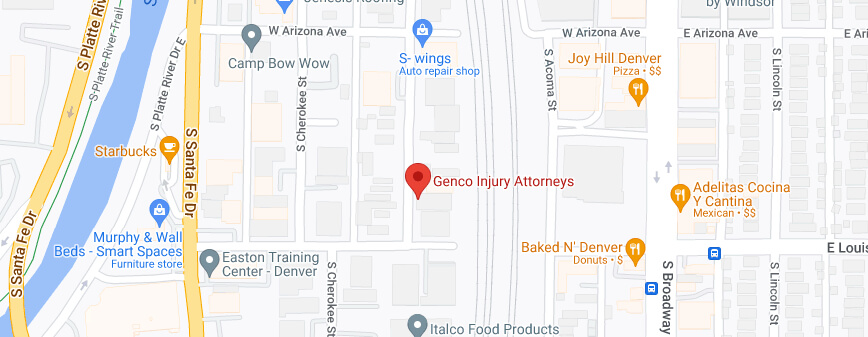How Does Colorado Determine Fault in Accidents Involving Bicycles or Motorcycles?
When a bigger vehicle, such as a car or truck, is in an accident with a smaller vehicle, such as a bicycle or motorcycle, a common assumption is that the larger vehicle is going to be at fault. That’s not always the case, however; more than one party can frequently have some fault for the accident. For example, a truck and a motorcycle get into an accident that injures the motorcyclist. The truck was speeding, but the motorcycle ran a red light. Both parties have some fault for the accident.
In Colorado, determining fault for insurance claims and lawsuits can be complex, not least because Colorado is what’s known as a modified comparative negligence state. That means if the injured party is found to be at least 50% liable for causing the accident, they’re no longer able to file claims for damages.
How Is Fault Proven in Accidents in Colorado?
For the injured party to successfully file for damages in Colorado, there are four points that need to be proven.
- Duty of care. This means that the person held responsible for the injuries (the defendant) owed the injured person (the plaintiff) a duty of care. That means the defendant was responsible for not acting in a negligent manner, whether deliberately or carelessly.
- Breach of the duty of care. This means that the plaintiff did not act in a responsible manner.
- Causation. Because the plaintiff did not live up to the duty of care, it caused an accident that led to injuries for others. This can be the most challenging part to prove in court.
- Damages. The breach of duty of care caused an accident that caused another person harm, which led to the defendant’s need for financial damages.
What if I’m Partly at Fault for the Accident?
This is a situation that’s more common than most people realize. An example would be a bicyclist who’s struck by a car that’s speeding. However, the bicyclist didn’t have the right of way in the intersection, whether they went through a stop sign or red light. The bicyclist was injured, but they’re partly at fault. This is where these types of cases can become even more complex and why working with an experienced personal injury attorney is highly recommended.
There’s not one form of what’s called comparative negligence that’s followed by each state. In Colorado, the law of modified comparative law is followed, and this becomes highly crucial in cases where more than one person is at fault for the accident.
Modified comparative negligence in Colorado holds that if the plaintiff is at least 50% at fault for the accident, they’re not eligible to claim damages. If they’re a maximum of 49% responsible, they can file claims for damages, but the percentage of their liability will reduce their damages. For example, using the situation described above with the speeding car and the bicyclist who didn’t have the right of way, the bicyclist may be found 40% at fault. If they were awarded $10,000 in damages, they’d receive $6,000 instead.
Obviously, this leads to situations where the defendant will want to push as much liability onto the plaintiff as possible in the hopes of avoiding having to pay damages. This is one reason why it’s best not to go alone in these types of cases but to work with an experienced attorney.
What Are the Statute of Limitations for Filing Claims After a Bicycle or Motorcycle Accident?
Most personal injury claims must be filed within two years of the accident date or when the plaintiff learns (or should have learned) that they were injured in the accident. When vehicles are involved in the accident, the statute of limitations may be extended to three years.
There are some situations where the case can still move forward if the plaintiff doesn’t discover the injury until the statute runs out. But it’s best to try to act before that happens.
What Should I Do if I Was Injured in a Bicycle or Motorcycle Accident?
First, if you’re physically able, try to collect the names and contact info of anyone involved in the accident, as well as any eyewitnesses. (But don’t discuss the accident with them; see below for more information on this.) Call the police to file a report, even if it seems like a minor accident–that’s required by law in Colorado. Once those actions are complete, see a doctor as soon as possible, even if the injury seems minor. There are injuries that don’t present symptoms right away and can become severe if untreated.
Then call Genco Injury Attorneys at 303-500-1376 for a free case evaluation. Motorcycle and bicycle injuries are complex, with multiple legal facets that need to be explored to develop the best case. Every case is unique and benefits from the experience and knowledge of our personal injury attorneys.
One thing not to do: Discuss the accident with anyone involved in it, whether other drivers, their insurance representatives, or lawyers. Their highest priority will be to shift as much blame onto you as possible to avoid having to pay out. They may also try to convince you to accept a much lower settlement than you might be eligible for. If they reach out to you, don’t engage in conversation, but forward all messages to your attorney.









